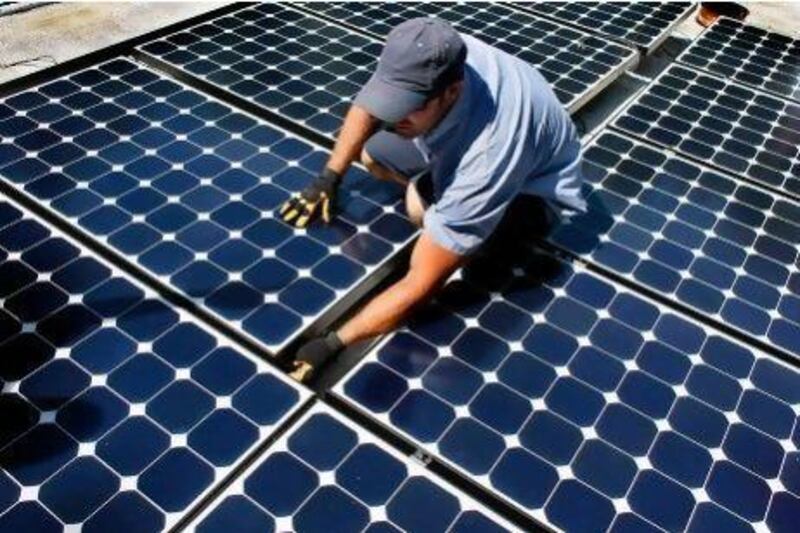Solar power is forecast to start generating revenue for Dubai residents within two years.
The Government plans to create financial incentives such as subsidies for companies to build solar arrays or for residents to install rooftop panels, according to the head of the emirate's energy planning body.
"It is in the pipeline," said Nejib Zaafrani, the chief executive of the Dubai Supreme Council of Energy, although he did not specify how such incentives would be structured. "I'm not going to tell you it's coming in the coming two, three months - but hopefully in the coming two years."
Regional governments have yet to introduce large-scale incentives for renewable energy, although Saudi Arabia is expected to announce a framework for solar power this year and the Abu Dhabi Executive Council is evaluating its renewables policy.
Putting a price on solar power is key to Dubai's target of drawing 1 per cent of its electricity from the sun by 2020.
The Supreme Council of Energy is researching the infrastructure required for a feed-in tariff, such as meters to measure the energy travelling between a house and the grid. That research will help the council draft the policy that will be the basis for such financial incentives, Mr Zaafrani told industry executives in Dubai last week.
Last month Saeed Mohammed Al Tayer, the chief executive of the Dubai Electricity and Water Authority, said the state utility would hire consultants to study the viability of such incentives.
The solar industry has blossomed in countries such as Spain and Germany thanks to the introduction of feed-in tariffs, in which the government pays utility companies for each kilowatt of power drawn from renewable sources.
That provides a business case for the utilities to pay residents who produce more power from rooftop solar panels than they take from the grid.
The idea is to make renewable energy financially competitive with traditional fossil fuels.
Renewables have had a particularly challenging time in the Gulf, where governments subsidise the petrol sold at stations and desalinated water pumped into homes.
Although Dubai has raised the price of water and power for non-Emiratis, and says it will pass on future increases in the cost of natural gas to customers, rates remain well below those in other parts of the world, giving residents fewer reasons to tackle their energy spending.
"When things are very cheap, do we worry about them?" asked Mr Zaafrani, who headed Shell in Abu Dhabi until last year. "Is the energy in Dubai very cheap? Yes. We are cheaper than the US, we are cheaper than Europe. The cost of energy counts."
Abu Dhabi, which aims to source 7 per cent of its power from renewables in the next decade, is deciding how to structure a policy to promote them.
Its largest project, a 100-megawatt solar array under construction in the Western Region, required a "green payment" from the Government to go ahead - essentially a one-project feed-in tariff.
Other planned installations, including a wind farm on Sir Bani Yas Island and another 100-megawatt solar park, are awaiting approval from the Abu Dhabi Executive Council and the Government's financial support.
Dubai's targets are less ambitious: 1 per cent solar power by 2020 and 5 per cent by 2030. But Mr Zaafrani insists that the first decade's target - equivalent to a 180 to 190-megawatt solar park - is a serious undertaking.
"The 1 per cent for Dubai in solar is big," he said. "It's a small percentage but it's big in absolute terms."
As renewable energy technology becomes more advanced, the Government could raise that target, he said.
By 2030 the emirate is to draw 70 per cent of its power from natural gas and 30 per cent from renewables, nuclear energy and clean coal. Demand growth until then is projected to balloon by 5 per cent a year - a modest rate compared with increases of about 10 per cent for the past five years.





